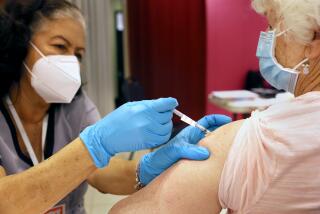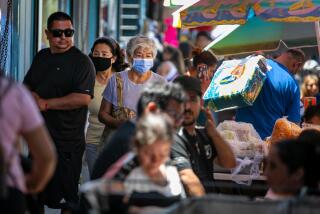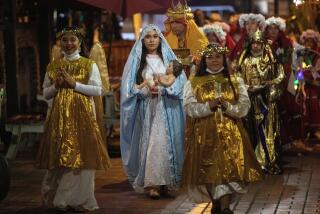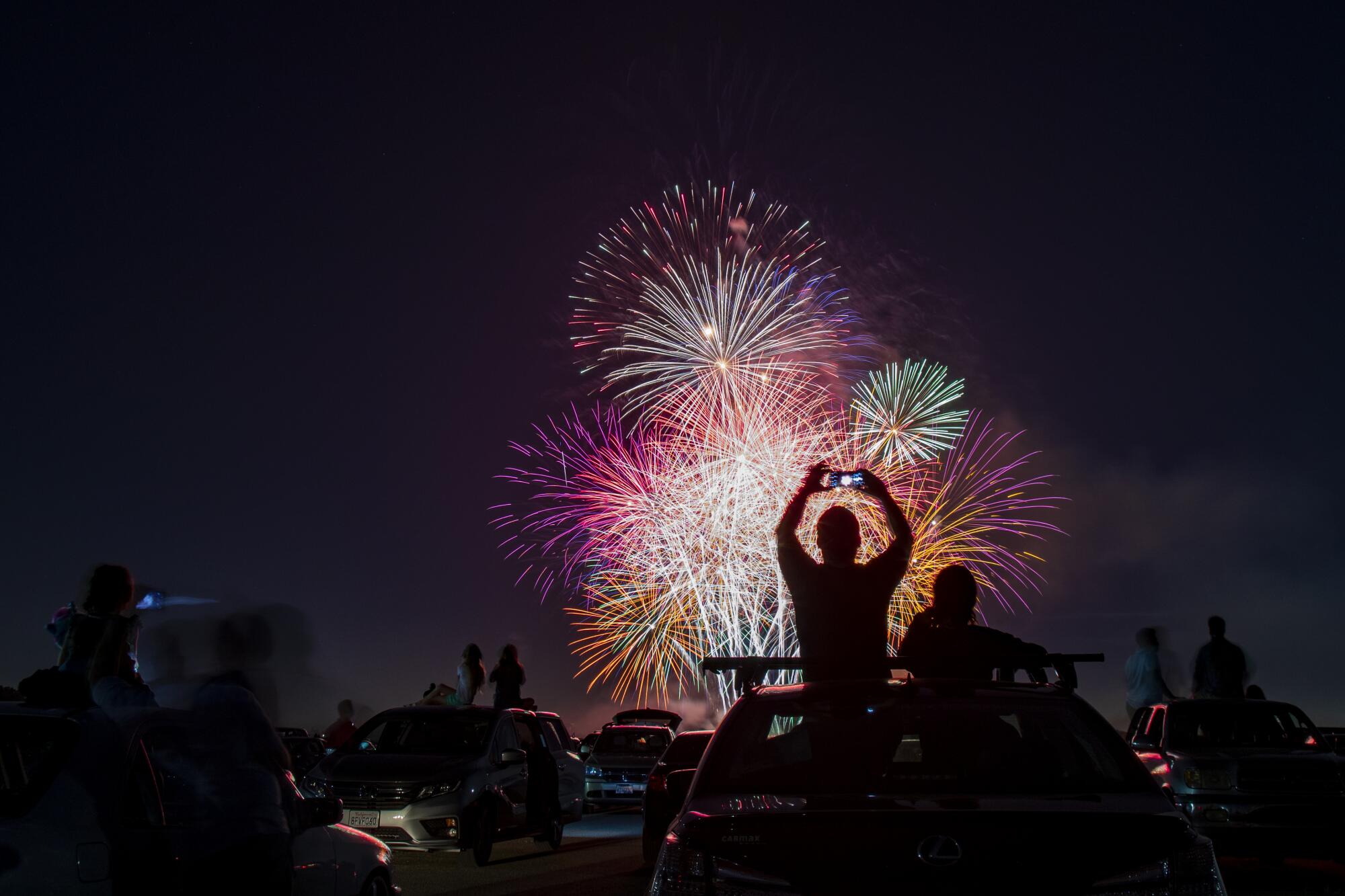
Kenzy El-Mohandes crested a hillside in Griffith Park early Saturday afternoon, eager to avoid the Fourth of July crowd she thought she and her friend would meet once they reached the observatory. With beaches closed for the holiday weekend, she assumed locals would flock to the park instead.
But as she rested on a grassy knoll and took in the sun, she was surprised to see a small, socially distanced crowd.
âItâs a normal weekend, weâre not feeling the patriotic spirit,â El-Mohandes said. âIâm less aware that itâs Fourth of July than normal years.â
The subdued Independence Day was exactly what officials ordered as California has struggled with a major spike in both coronavirus cases and hospitalizations over the last month as the economy reopened, placing the state back in the danger zone.
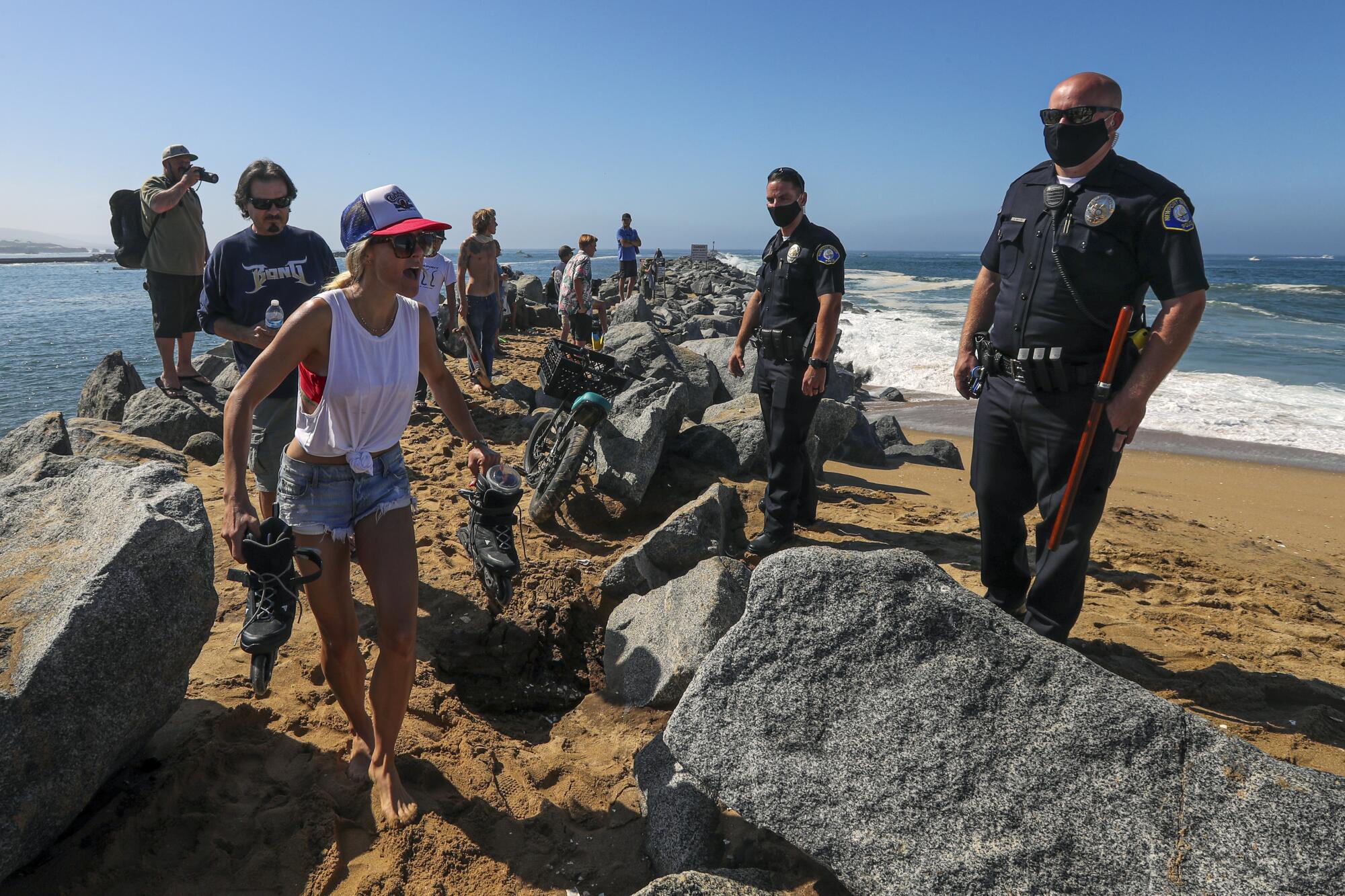
Officials had feared a July 4 weekend of crowded beaches, barbecues, parties and packed restaurants would cause a surge in new infections, further overwhelming already filling hospitals. Data showed that Californiaâs COVID-19 surge began during the Memorial Day weekend as people stuck inside for months decided to get back to old routines.
But it appears dire warnings as well as new restrictions had the intended effect â at least so far.
Los Angeles County banned fireworks displays, some parades and marathons moved online, and cities from Big Bear to Burbank canceled holiday shows. Huntington Beachâs popular Main Street parade was replaced by one that roamed through residential areas, allowing social distancing.
There were continued protests in downtown L.A. and elsewhere over the police killing of George Floyd in Minneapolis, but many in attendance were wearing masks. One of the few holdouts was Lancaster, where officials were set to go forward with a fireworks show despite COVID-19 concerns.
In Santa Monica, the pier stood empty over a closed and deserted beach.
Janet and Shine Ling sat in lawn chairs in a cliff park off Ocean Avenue, where they could see sailboats glide in the Pacific hundreds of yards away.
âNo oneâs stopping us from sitting here right now, so weâre enjoying the beach from a distance,â Shine said.
On any other Fourth of July, theyâd be down in the sand, Janet said, but this year the picnic had to move.
The siblings said they hadnât seen each other since January. âWe were debating whether we should even hang out,â Shine said.
âIs it too close? Is it unsafe?â Janet wondered.
Two weeks ago, Shine went to the now-closed beach for his birthday.
âI went right up to the water,â Shine said. âNobody was wearing a mask, but everybody was keeping six feet of distance and the wind was pretty stiff, so I was like, âYou know what, I do feel pretty silly wearing a mask.ââ
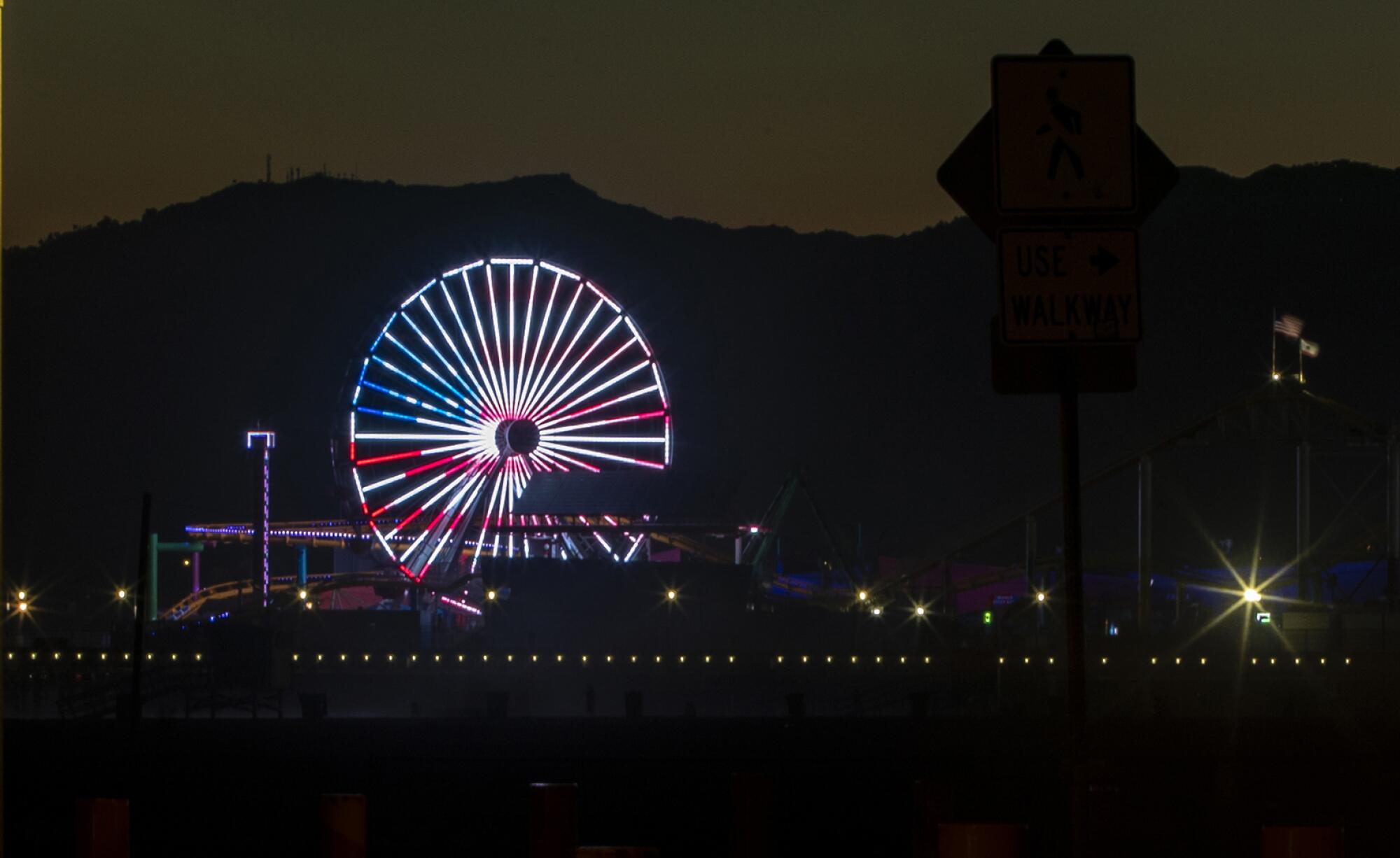
Janet has had her own mask dilemma. âIâve had a lot of experience with anti-Asian sentiments, especially when Iâm wearing a mask,â she said. âSo, for me itâs kind of a mixed bag. Do I try to do this to help others, or do I try to be safe for myself so I donât get harassed?â
To try to tame the Fourth, Gov. Gavin Newsom imposed new restrictions on indoor dining at restaurants in many counties. Some communities including Santa Monica and West Hollywood said they would fine people who were not wearing masks, which is required in public spaces under a state order.
One risk area harder to detect is private social gatherings inside private homes, which officials believe has been a major cause of the latest infections.
California now has more than 252,000 confirmed COVID-19 cases and more than 6,300 deaths.
In Griffith Park, most visitors sat far apart from one another, some with masks and others without face coverings as they lounged with family and friends.
Jelani Dula and two friends made the road trip from San Jose to Southern California for the holiday weekend. The 21-year-old said he was excited to see famous L.A. sites â especially the unobstructed downtown skyline free of smog â but wasnât in a celebratory mood because of âall of the civil issues and racial issues going on.â
âThis Fourth of July doesnât really feel the same,â Dula said, taking in the view while his friends took pictures.
Near Olvera Street downtown, members of indigenous groups joined with Black Lives Matter organizers in a peaceful protest that called for unity among minorities and an acknowledgment of the nationâs many sins on its birthday.
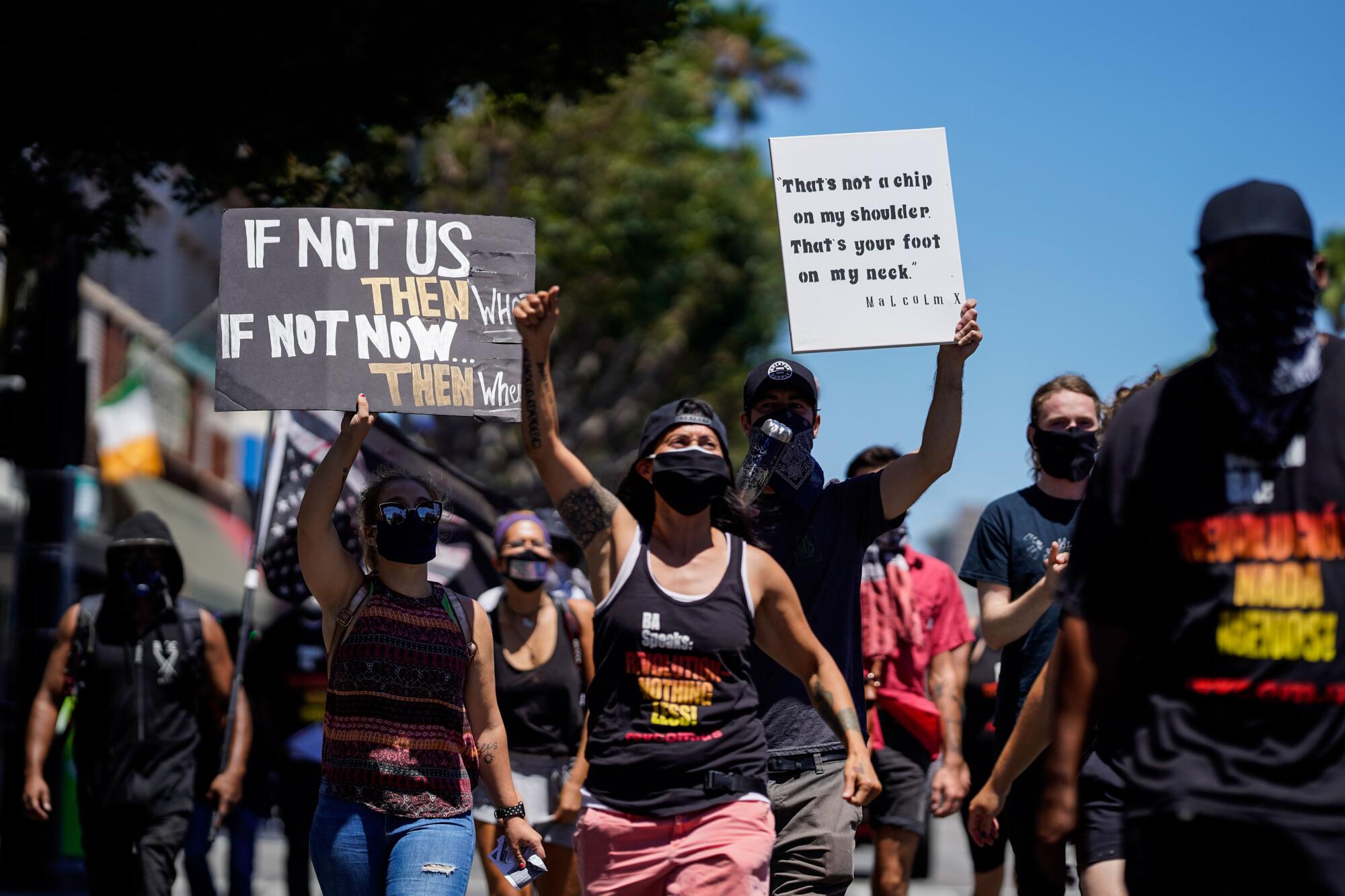
Some burned incense, tobacco and sage, while others spoke of the âFarce of July.â Many marched to Grand Park and beyond with signs calling for the âabolishment of ICE,â the defunding of police and justice for AndrĂŠs Guardado, Breonna Taylor, George Floyd and others slain by law enforcement. The protesters all wore face coverings.
Indigenous leader Shannon Rivers, of the Akimel Oâotham people, called on about 400 demonstrators to understand âthe many liesâ taught to American youths that prop up âwhite supremacyâ at the cost of all native peoples and minorities. He asked Black Lives Matter to join the indigenous movement before saying forcefully, âBlack lives matter.â
Not far from Olvera Steet, at Echo Park Lake, the hundreds of families gathered there provided a semblance of holiday normalcy. Vendors sold small toys, plates of carne asada and French-style crepes. Most visitors celebrated from a distance, but masks were less common.
Skylar Falgout, 26, drove from Sherman Oaks to enjoy the scenery and eat her lunch. This year, she didnât feel like celebrating.
âWith the way the social climate is going, it doesnât feel right,â she said, as more than a dozen swan-shaped pedal boats cruised across the lake. âI would have hung out with friends, but hanging out with people is a bad idea right now with the way the pandemic is going.â
Ronald Sarver walked along the Veterans Administration campus in West Los Angeles, where he had recently moved into L.A.âs first temporary tent city in four decades â an area meant for veterans without homes so they can wait out the COVID-19 crisis by sheltering in place and social distancing in their own tents.

âItâs better than nothing at all. Before this, I was waking up and all I had was a prayer,â said Sarver, who served in the Navy during the Iran hostage crisis.
Now, he said, he has a place to sleep and eats three meals a day. Heâs grateful to have a place as the coronavirus â what he called âan act of Godâ â tears through the city.
On Independence Day, Sarver said, he felt patriotic.
âI was thinking earlier, and I teared up a little bit,â he said, an American flag pinned to his shirt.
Down the street, a row of identical tents bearing that same red, white and blue flag lined the sidewalk outside the VA grounds. Standing among them, Luis Placencia, who donned an American flag baseball cap, wasnât as caught up in Saturdayâs festivities.
âTo me itâs just another day. Whatâs the meaning of it?â he wondered. âThe independence of who, from what?â
Placencia, who at 59 said he would fight for the country again if called upon, lives close to the tents in a campus apartment renovated for unhoused veterans. As he visited a friend, he questioned the necessity of the string of tents that bend and curve with San Vicente Boulevard. There are empty buildings on the VA campus, he said.
Giovanni Villa, whose tent sits under an Army Veteran flag and a star-spangled banner, said he was grateful to have his spot.
âThese tents are wonderful. This is the first home Iâve had in about five years,â he said. âItâs someplace where I can try to get myself going. Itâs hard being homeless .... Itâs not a house. Itâs not a bathroom, or a shower, or a refrigerator.â
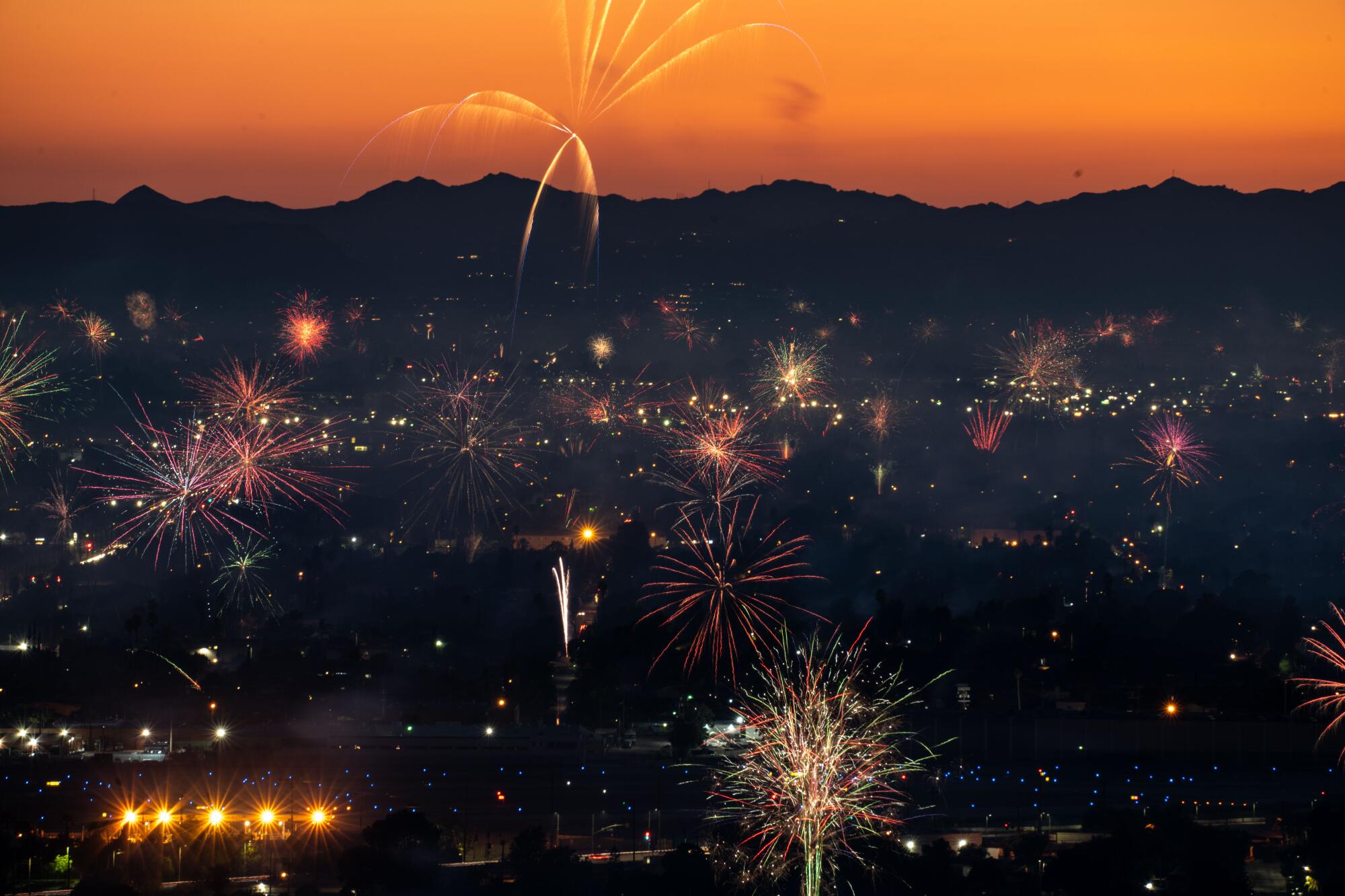
Villa said he welcomed the holiday because âit brings our nation together for a reason thatâs kind of sacred to us: the sacrifices men and woman have made for our country.â
Even as the coronavirus has made life more difficult â heâs having trouble obtaining an ID and his stimulus money â the Army veteran said he is proud to be an American.
âIâm glad to live in this country. Even though there are a lot of vast problems, there are a lot of good people that are broad-minded and have their own thoughts,â he said.
âThatâs what being an American is: to be able to express yourself in a respectful way to others and not be condemned for it.â
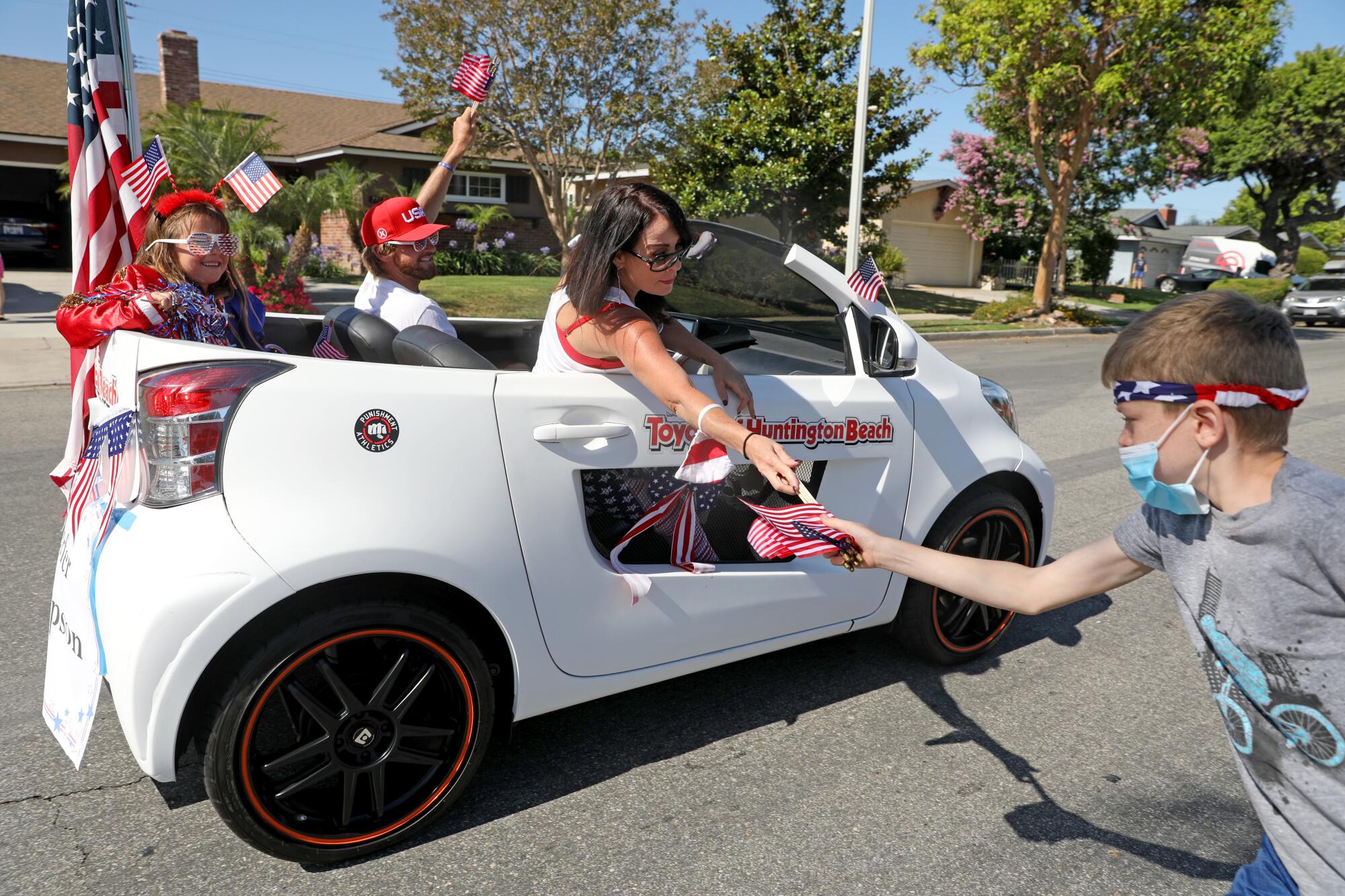
Times staff writer Jack Dolan contributed to this story.
More to Read
Sign up for Essential California
The most important California stories and recommendations in your inbox every morning.
You may occasionally receive promotional content from the Los Angeles Times.
